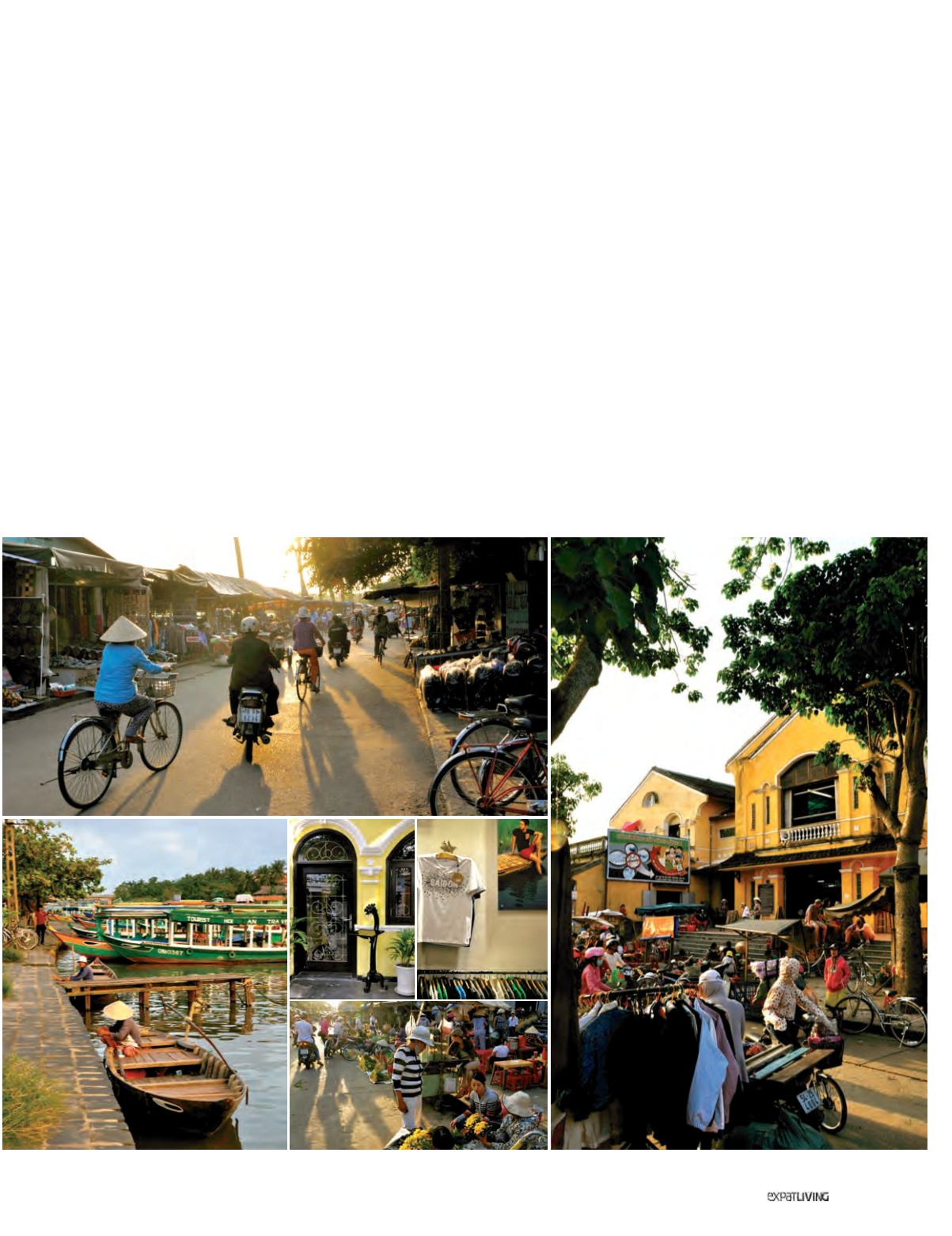

VIETNAM
265
May15
Laid-back bars in the town centre shut
around midnight and revellers looking
to kick on are politely pointed to a divey
café over the river that stumbles on until
about 2am.
Af ter a few exhausting days
of shopping and bar-hopping in
freewheeling Ho Chi Minh City, or
Saigon as the locals still call it, Hoi An
offers the perfect escape to unwind, or
nurse a serious hangover.
Where Saigon – like every city in
Vietnam – has sold its soul to the
motorbike, motorised transport is banned
in the centre of Hoi An, allowing care-free
detours into boutiques, spa emporiums
and former residences of Chinese and
Japanese merchants without fear of
being skittled by a moped.
Hoi An’s a treasure trove of antiquities,
but the riverside marketplace a stroll
down from the famous Japanese
covered bridge is the place for “antique-
fied” knick-knacks that make great gifts.
Mostly offered for less than US$20,
they’re often bargained down to half
the amount.
There is little artifice about the food
market, however, where older residents
don conical hats and sell mountains of
fruit and devotional flowers for temple
visits.
Hoi An’s golden age as a centre of
commerce came crashing to a halt at
the end of the 18th century, with the
downfall of a trade-friendly dynasty
and the rise of the new concession
port for French interests at Da Nang, a
half-hour drive up the coastal highway.
The river also silted up to stifle traffic,
but the sudden isolation was a blessing
in disguise, allowing the town to while
away the next 200 years in obscurity
as colonialism and war changed the
country irrevocably.
The tradition of artisanship survives,
and though smart cafés and restaurants
with fusion food and zippy Wi-Fi access



















